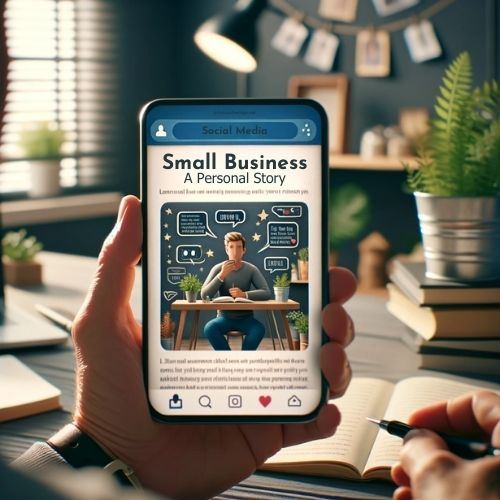Embarking on a journey as a new consultant or distributor, whether or not it is with Paparazzi accessories, is not just about embracing a business opportunity; it's about stepping into a world where every product you represent reflects your dreams and aspirations. To ensure a successful start and maintain that initial burst of excitement, it’s crucial to adopt strategies that not only enhance your business acumen but also resonate with your passion for the industry you are in. Here are three comprehensive strategies, each accompanied by practical, business-savvy examples to guide you in your new venture.
1. Embrace and Exhibit Your Products
In the realm of consulting or distribution, regardless of the industry, the most compelling marketing tool at your disposal is the direct use or demonstration of the products you represent. This strategy goes beyond mere promotion; it's about embodying the values and functionalities of the product, thereby creating a living testament to its worth.
Practical Example: Stand Out
 Envision yourself at a local business gathering or community function, actively engaging with your surroundings while subtly incorporating your product into the setting. This product could be anything from an advanced tech gadget, a cutting-edge piece of wellness equipment, to a distinctive fashion accessory. The key here is the natural and unobtrusive way you introduce and utilize your product, which not only captures interest but also initiates meaningful conversations. This approach is far more than just a method to draw attention; it’s a strategic demonstration of how seamlessly the product can blend into and enhance everyday life.
Envision yourself at a local business gathering or community function, actively engaging with your surroundings while subtly incorporating your product into the setting. This product could be anything from an advanced tech gadget, a cutting-edge piece of wellness equipment, to a distinctive fashion accessory. The key here is the natural and unobtrusive way you introduce and utilize your product, which not only captures interest but also initiates meaningful conversations. This approach is far more than just a method to draw attention; it’s a strategic demonstration of how seamlessly the product can blend into and enhance everyday life.
Take, for example, the scenario where you are representing a high-tech fitness gadget. By actively using it to monitor your activity at the event, you effortlessly showcase its user-friendliness and functionality. This not only invites inquiries but also sparks discussions around its diverse features and potential benefits, making it a topic of genuine interest rather than a forced sales pitch.
In a similar vein, if you’re exhibiting a line of unique fashion accessories, like a striking necklace coupled with elegant earrings and complementing bracelets and rings, you create an immediate visual impact. Wearing these items allows others to witness their quality and style firsthand. It’s a dynamic showcase, far more compelling than any catalog or website image. As you engage with others, your ensemble becomes a conversation starter, enabling you to share insights about the craftsmanship, design, and versatility of your collection.
In each of these interactions, you’re not just presenting a product; you’re embodying its value and appeal. This method allows for a natural, organic introduction of the product into a conversation. It’s an opportunity to demonstrate your expertise and passion, and potentially, to transform a casual observer’s curiosity into a sale or even inspire them to join your team. This strategy is about creating connections, not just customers, by showcasing real-world applications and the tangible benefits of what you’re offering.
Business Insight: The Power of 'Living Your Brand'
This approach, termed "living your brand," involves being a dynamic showcase for your products, thereby creating genuine opportunities for engagement. It's a subtle yet effective form of marketing that builds trust and showcases the real-world appeal of your accessories and products. This strategy extends beyond mere advertising; it’s about embodying the ethos and functionality of your brand, making it a part of your everyday narrative.
Building Brand Awareness:
 Brand awareness is about how well your potential and existing customers recognize and associate with your brand's visual identity - its logo, colors, and overall message. By wearing your brand, you reinforce these elements, enhancing recognition and association. This not only builds your business's identity but also fosters trust and customer loyalty, influencing purchasing decisions and encouraging repeat business, ultimately boosting sales.
Brand awareness is about how well your potential and existing customers recognize and associate with your brand's visual identity - its logo, colors, and overall message. By wearing your brand, you reinforce these elements, enhancing recognition and association. This not only builds your business's identity but also fosters trust and customer loyalty, influencing purchasing decisions and encouraging repeat business, ultimately boosting sales.
- Marketing with Minimal Effort: As a small business owner, finding cost-effective ways to maximize exposure is crucial. Wearing branded clothing or using branded products is a visually impactful, low-cost marketing strategy. It embeds brand awareness, creates familiarity, and serves as a continual reminder to prospective customers of who you are and what you do. It elevates your company, adds a sense of pride and professionalism, and imparts real value to your brand in previously unconsidered ways.
- Benefits of Incorporating Your Brand in Everyday Life:
- Getting Noticed: Wearing your brand makes you and your business instantly recognizable, helping to cement your brand in the public consciousness.
- Creating Business Interest: Branded clothing and objects signifies professionalism and builds trust, influencing people's perceptions of your credibility and reliability.
- Inspiring Confidence: Seeing you confidently represent your business can instill confidence in your services among potential customers. It enhances your sense of responsibility and team spirit.
- Reassuring Customers: Your branded presence reassures customers, especially in personal or home services, establishing trustworthiness, making you easily identifiable.
- Strengthening Customer Relationships: Positive experiences with your brand lead to customer loyalty and recommendations.
- Cost-Effective Advertising: Wearing and using your products is cost-effective form of advertising. Living your brand can positively influence your attitude and performance.
- Suitable for Any Size Business: Expanding your personal use of the products you represent is effective for businesses of all sizes. It offers a way to promote and grow your brand naturally, and gives you a way to connect to your customers as a user of the brand yourself.
Ultimately, incorporating your products in your daily life as well as branded items, is a strategic investment that yields maximum returns. It's not just about making a great first impression; it's about building brand recognition, reinforcing customer reassurance, and proudly showcasing your brand. This comprehensive approach can significantly enhance your professional image, customer perception, and ultimately, your business success.
2. Share Your Personal Journey
Your journey to becoming a consultant or distributor is unique and sharing it can create a genuine connection with your audience. This strategy is about storytelling and authenticity, two key elements in building a loyal customer base.
Practical Example: The Art of Storytelling in Social Media
 Utilizing social media platforms to share your story is not just about broadcasting information; it's about engaging in a form of digital storytelling that captures and retains the attention of your audience. In an online world brimming with content, what makes storytelling so crucial, and how can you ensure that your story not only resonates but also compels people to pause their scrolling and engage?
Utilizing social media platforms to share your story is not just about broadcasting information; it's about engaging in a form of digital storytelling that captures and retains the attention of your audience. In an online world brimming with content, what makes storytelling so crucial, and how can you ensure that your story not only resonates but also compels people to pause their scrolling and engage?
Significance of Storytelling:
- Emotional Connection: Stories have the power to evoke emotions, making them a potent tool for creating a bond with your audience. A narrative that includes personal challenges, triumphs, or moments of revelation allows your audience to empathize and connect with you on a deeper level.
- Authenticity and Relatability: Authentic storytelling helps in humanizing your brand. When you share genuine experiences, struggles, and successes, it makes you more relatable. People are drawn to stories that reflect real-life experiences, as it makes the storyteller appear more genuine and trustworthy.
- Memorability: A well-told story is memorable. When you share a narrative that is engaging and unique, it sticks with your audience, making your brand more memorable in a crowded digital space.
Crafting Engaging Stories:
 To make your social media posts or videos genuinely engaging, consider the following:
To make your social media posts or videos genuinely engaging, consider the following:
- Personal Touch: Just like you would in a conversation with a friend, include personal anecdotes or experiences. Did a specific product change your life? Did a particular moment at your company inspire you? These personal touches not only add depth to your story but also make it unique.
- Visuals and Emotions: Use visuals like images, videos, or graphics to complement your story. Visual storytelling can be incredibly powerful, especially when combined with emotional narratives. A compelling image or an expressive video can enhance the impact of your words.
- Structure and Clarity: A good story has a clear structure – a beginning, middle, and end. Start with a hook that grabs attention, delve into the heart of your story with details and emotions, and conclude with a takeaway or a call-to-action that leaves your audience thinking or wanting to engage further.
- Relatable Themes: Focus on themes that are universally relatable – aspirations, challenges, journeys, and transformations. When your story touches on common human experiences, it’s more likely to resonate with a broader audience.
- Interactivity: Encourage interaction by asking questions or inviting feedback. This not only increases engagement but also makes your audience feel like they are a part of your story.
- Consistency and Frequency: Regularly sharing stories keeps your audience engaged and helps in building a narrative over time. Consistency in your storytelling approach also aids in establishing your voice and brand identity.
By integrating these elements into your storytelling, you transform your social media presence into a dynamic and engaging narrative platform. Remember, it's not just about the content you share, but how you share it. Your story, told compellingly and authentically, can turn casual viewers into engaged followers and even brand advocates.
Business Insight: the Role of Personal Stories in Humanizing Your Brand
Personal stories play a pivotal role in bridging the gap between a business entity and its audience. By weaving personal narratives into your brand’s fabric, you not only humanize your business but also create a more approachable and relatable persona. Let's delve deeper into how personal stories can enhance your brand and explore various examples and business applications.
- Building Trust with Transparency: Sharing your journey, including the challenges and setbacks, fosters a sense of transparency. For example, a business owner sharing the story of how they overcame initial financial hurdles or product development challenges can resonate with other entrepreneurs, creating a sense of solidarity and trust.
- Showcasing Passion and Commitment: Narrating what drove you to start your business or develop a particular product showcases your passion and commitment. For instance, a chef-turned-entrepreneur might share their story of how childhood cooking experiences inspired them to start a gourmet food line. This not only adds depth to the brand but also appeals to customers who value authenticity and passion-driven businesses.
- Relating to Customer Needs and Desires: Personal stories that align with customer experiences can make your brand more relatable. A fitness brand owner sharing their personal health transformation journey can inspire and connect with customers facing similar struggles, showing that the brand truly understands their needs and desires.
- Creating a Brand Identity and Culture: Personal stories can shape your brand’s identity and culture. For example, a tech company founder sharing their passion for sustainable technology can define the company’s eco-friendly culture and attract customers and employees who share similar values.
- Enhancing Customer Engagement: Engaging stories about the origins of a product or the evolution of a service invite customer interaction. A fashion brand sharing the inspiration behind a jewelry line – perhaps tied to a cultural heritage or a personal fashion journey – can engage fashion enthusiasts and create a loyal customer base.
- Empowering Teem Member Advocacy: When team members share their personal stories related to the brand, it not only humanizes the business but also empowers team member advocacy. For instance, team members sharing their experiences and growth within your downline organization can attract potential team members and create a positive image.
- Facilitating Community Connection: Stories that highlight community involvement or social responsibility initiatives can forge stronger community connections. A business sharing its story of community engagement, like organizing local clean-ups or supporting local artisans, can enhance its image as a socially responsible brand.
Incorporating personal stories into your business narrative is not just about adding a human touch; it's a strategic approach to making your brand more approachable, relatable, and trustworthy. Whether it's through social media, marketing materials, or face-to-face interactions, these narratives can significantly enhance how customers and team members perceive and interact with your brand.
3. Cultivate Your Network Through Authentic Engagement
Networking is crucial, but it’s not just about expanding your contact list; it’s about building meaningful relationships. The aim is to meet potential customers and collaborators through genuine interactions.
Practical Example: Meaningful Connections
When presented with the chance to connect with others, the essence of these interactions should be sociability and genuine connection, not aggressive sales tactics. Instead of zeroing in on immediate sales, prioritize engaging in meaningful conversations. Take the time to actively listen to their stories and experiences, and reciprocate by sharing your own. This empathetic and authentic approach lays the foundation for trust and rapport, which are key to nurturing long-term customer relationships and collaborative opportunities. By focusing on building relationships first, you create a network based on mutual respect and understanding, which can prove invaluable for your business in the long run.
Authentic Engagement in Networking

- Join Industry-Specific Workshops or Seminars: Participate in workshops or seminars relevant to your industry. These are great places to meet like-minded professionals and potential clients who are already interested in the field. Engage in discussions, offer insights based on your experience, and be open to learning from others. This can lead to meaningful connections and collaborations.
- Volunteer at Community Events: Get involved in community events, not just as a participant but as a volunteer. This gives you a unique opportunity to interact with a diverse group of people, including local business leaders and potential clients, in a more relaxed and personal setting. Your involvement demonstrates your commitment to the community, making your interactions more genuine and memorable.
- Host or Attend Casual Meetups: Organize or attend informal meetups with professionals from your field or related industries. These can be casual coffee meetups or small group discussions. The informal setting eases pressure and allows for more authentic conversations, helping you to build a network of trusted contacts.
- Participate in Online Forums and Groups: Engage with online communities related to your industry. Share your knowledge, answer questions, and be active in discussions. This can establish you as a knowledgeable and approachable figure in your field, attracting potential customers and collaborators.
- Attend Trade Shows and Expos: Trade shows and expos transcend mere product showcases; they serve as pivotal networking hubs. When attending these events, set a goal to connect with fellow exhibitors and visitors alike. Engage in the exchange of ideas, delve into discussions on industry trends, and seek out opportunities for potential collaborations. Many companies organize annual conventions, gathering consultants from across the nation for updates, educational sessions, product launches, and a plethora of enriching opportunities. These gatherings are an invaluable resource for enhancing the operation of your small business. Embrace the chance to learn from the experiences of others, absorbing as much knowledge and insight as possible to fuel your growth and success.
- Offer to Speak at Events: Offer to speak at local events or conferences. This positions you as an expert in your field and provides a platform to share your story and expertise. After your talk, make time to interact with attendees, answering questions and building connections.
- Participate in Local Business Associations: Join local business associations or chambers of commerce. These organizations often host networking events, provide resources for local businesses, and are a great way to meet other business owners and potential clients in your community.
- Social Media Interaction: Utilize social media platforms not just for posting, but for actively engaging with your audience. Respond to comments, engage in conversations, and participate in relevant groups or chats. This can help in building relationships beyond the digital space.
- Collaborate on Community Projects: Collaborate with other businesses or groups on community projects or charity events. This not only benefits the community but also puts you in touch with other businesses and individuals who value corporate social responsibility.
- Attend Business Breakfasts or Lunches: Regularly attend business breakfasts or networking lunches. These events are often designed to foster networking and are a great opportunity to meet professionals from a variety of industries in a more structured yet relaxed environment.
By engaging in these activities, you not only expand your network but also build a web of relationships based on mutual respect, trust, and genuine interest. This can significantly enhance your business prospects and lead to long-term professional relationships.
Business Insight: The Essence of Quality Networking
Effective networking is about quality, not quantity. It's about is fundamentally about cultivating high-quality connections rather than amassing a large number of superficial contacts. The focus should be on identifying and engaging with individuals who genuinely resonate with your brand's ethos and can potentially become either steadfast customers or influential brand ambassadors. This section expands on how to achieve this with practical business applications:
Identifying Key Influencers and Collaborators:
In any industry, it's crucial to recognize individuals who have a strong influence in your niche market. These could be bloggers, stylists, or even local celebrities who align with your brand values. Building relationships with these key figures can lead to collaborative opportunities that amplify your brand's reach and credibility.
- Personalized Engagement: Go beyond generic interactions by tailoring your communication to individual interests and preferences. For example, if you meet a potential client who expresses interest in western fashion, you can showcase your western and accessory line and pieces that include natural stones. Personalizing your approach demonstrates that you value and understand their unique preferences, fostering a deeper connection.
- Leveraging Social Media Connections: Utilize social media platforms not just for marketing but for networking. Engage with followers in meaningful ways – reply to comments, share user-generated content, and even reach out directly to followers who consistently engage with your brand. These platforms can be powerful tools for identifying and connecting with potential brand advocates.
- Hosting Exclusive Events: Organize exclusive events or preview shows for a select group of clients and influencers. These events provide an intimate setting for deeper engagement and allow attendees to experience your brand firsthand. This exclusivity can make attendees feel valued and more inclined to advocate for your brand.
- Attending Niche Market Events: Participate in events specific to your market niche. For instance, if your brand specializes in artisanal food, attending craft fairs or local food events can connect you with an audience that appreciates and values your products. These events are opportunities to network with potential customers who have a keen interest in your specific product category.
- Offering Value-Added Services: To foster loyalty and long-term relationships, consider providing value-added services like personalized styling advice or after-purchase care tips. This approach shows that your commitment to customers extends beyond the sale, enhancing their overall experience with your brand.
- Follow-Up Communications: After initial meetings or interactions, follow up with personalized messages or emails. This could be a simple note thanking them for their time or sharing additional information about a topic discussed. Consistent follow-up keeps the conversation going and cements the relationship.
Effective networking is about fostering relationships with a core group of individuals who genuinely connect with your brand. These relationships are not just transactional; they are built on mutual respect, shared values, and personal engagement, leading to loyal customers and influential brand advocates who can play a pivotal role in the growth and success of your business.
Embrace Your Uniqueness
 In your journey in direct sales, remember that your individuality is your greatest asset. The way you integrate these strategies into your business will be distinct from others, and that is your strength. Celebrate your uniqueness, be genuine in your interactions, and let your personality shine through in every aspect of your business. Your authenticity will not only set you apart but also make your business journey enjoyable and fulfilling.
In your journey in direct sales, remember that your individuality is your greatest asset. The way you integrate these strategies into your business will be distinct from others, and that is your strength. Celebrate your uniqueness, be genuine in your interactions, and let your personality shine through in every aspect of your business. Your authenticity will not only set you apart but also make your business journey enjoyable and fulfilling.
Interested in starting a jewelry business with a very low initial investment? You can find out more here. If you are ready to start, then I would be honored to help you through your journey to success.